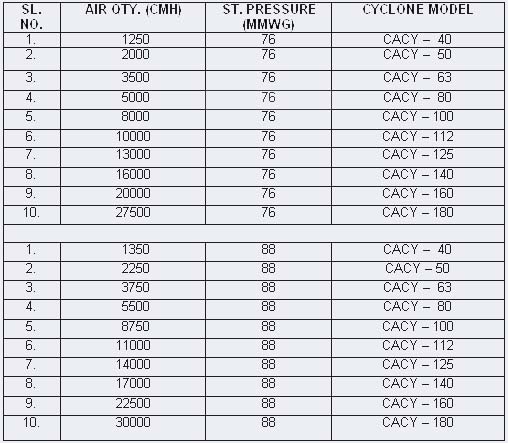Operating Principles Of Cyclone Separators:
Although there are four commonly used cyclone separators, their operating principles based on that of the conventional cyclone, are very similar. In the conventional cyclone, the gas enters a cylinder tangentially, where it spins in a vortex as it proceeds down the cylinder. A cone section causes the vortex diameter to decrease until the gas reverses on it and spins up the center to the outlet pipe or vortex finder. A cone causes flow reversal to occur sooner and makes the cyclone more compact Dust particles are centrifuged toward the wall and collected by inertial impingement. The collected dust flows down in the gas boundary layer to the cone apex where it is discharged through an air lock or into a dust hopper serving one or more parallel cyclones . Although conventional cyclones can be built to larger diameter, they are commonly 600 to 1600 mm in diameter.
Applications Of Cyclone Separators:
- Used in industries such as food industries
- Used for removing the dry product from the air
- Used in Brass / Metal Buffing Process
- Use in Flour & Rice Mill (bran separation process)
- Used in Wood, Rubber, Coal and mostly in every kind of industries.
Key Parameters Of Cyclone Separators
The most important parameters of a cyclone as for any separating device are its collecting efficiency and the pressure drop across the unit. The collecting efficiency of a cyclone is defined as its ability to capture and retain dust particles whereas the pressure drop is the amount of power that the unit needs to do so.
Cyclones At Different Air Quantities & St. Pressure

|

